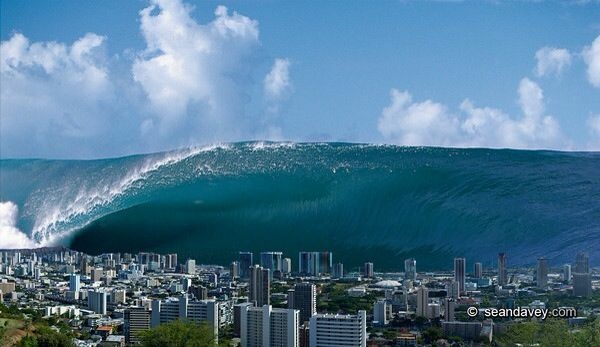This posting is inspired from a recent suggestion of a closed relative that I do write a blog post on the subject, since I have never written this topic in my blogs since 2009. Yesterday earthquake in Russia's Kamchatka Peninsula ( also in the Ring of Fire ) adds the appropriateness of this topic💚 in my blog today.

The Pacific Ring of Fire: The Philippines at Nature’s Crossroads
The Pacific Ring of Fire is Earth's most volatile seismic belt, wrapping around the Pacific Ocean in a fiery loop of tectonic tension. Right in its midst sits the Philippines, a country both enriched and endangered by this geology. Known for its stunning landscapes and fertile soils, the Philippines also faces relentless threats of earthquakes, volcanic eruptions, and tsunamis — consequences of living atop the Earth’s most restless region.
🔥 Why Is the Philippines in the Hot Zone?
The Philippine archipelago straddles the Philippine Sea Plate, the Eurasian Plate, and the Pacific Plate, making it a seismic hotspot. Constant tectonic friction gives rise to:
Earthquakes:
Over 20,000 earthquakes occur annually in the Philippines, though only a fraction are felt.Example: The 1990 Luzon Earthquake (Magnitude 7.8) devastated Central Luzon, killing over 1,600 people and causing massive infrastructure damage.
Volcanic Eruptions:
Home to 24 active volcanoes, the Philippines regularly faces eruptions.Example: Mount Pinatubo’s 1991 eruption, the second-largest of the 20th century, spewed ash worldwide, causing global temperatures to drop temporarily.
Tsunamis:
Underwater earthquakes and volcanic activity trigger tsunamis along the Philippine coasts.Example: The 1976 Moro Gulf Tsunami remains the deadliest in Philippine history, with over 8,000 casualties.
📅 Historical Timeline of Major Disasters in the Philippines
| Year | Event | Impact |
|---|---|---|
| 1645 | Luzon Earthquake | Destroyed Manila’s structures including churches |
| 1814 | Mayon Volcano Eruption | Buried towns, killing 1,200+ people |
| 1976 | Moro Gulf Earthquake & Tsunami | 8,000+ deaths in Mindanao |
| 1990 | Luzon Earthquake | Magnitude 7.8, 1,600+ deaths, severe infrastructure damage |
| 1991 | Mount Pinatubo Eruption | Global climate impact, 800 deaths, ashfall worldwide |
| 2013 | Bohol Earthquake | Magnitude 7.2, destroyed centuries-old churches |
| 2020 | Taal Volcano Eruption | Thousands evacuated, widespread ashfall |
✅ Essential Survival Tips for Earthquakes, Tsunamis, and Volcanic Eruptions
Earthquake Survival Tips
Drop, Cover, and Hold On: Protect your head and neck under sturdy furniture.
Stay Indoors: Move away from windows and heavy objects.
Prepare an Emergency Kit: Include water, food, flashlight, and a whistle.
💚Tsunami Preparedness
Move to Higher Ground Immediately: After a strong coastal earthquake.
Heed Sirens and Warnings: Follow official instructions promptly.
Know Evacuation Routes: Pre-plan safe exits if you live near the coast.
Volcanic Eruption Safety
Wear Masks: To protect against ash inhalation.
Stay Indoors: Ash can cause respiratory problems and damage electronics.
Follow Evacuation Orders: Volcanic activity can escalate rapidly.
🌋 The Paradox of Beauty and Danger
The same geological forces responsible for this chaos also gift the Philippines with picturesque landscapes, rich minerals, and fertile lands. Volcanoes like Mayon, with its perfect cone, are tourist attractions, while fertile volcanic soil sustains agriculture.
Yet, the Filipino spirit of resilience and preparedness shines brightest in these times. Institutions like PHIVOLCS and PAGASA continuously monitor and educate citizens, helping communities adapt to nature's unpredictable might.
✅ Conclusion
The Philippines' place in the Pacific Ring of Fire is both a geographic curse and a cultural crucible. Filipinos continue to adapt, prepare, and persevere, living in respect and awe of the earth's volatile forces. With vigilance and science on their side, the country continues to balance life between beauty and the brink of disaster.
Lastly, here are some of my favorite quotes on Mountains and Nature
Mountains:
- “The mountains are calling and I must go.”
— John Muir - “Climb the mountains and get their good tidings. Nature’s peace will flow into you as sunshine flows into trees.”
— John Muir - “Somewhere between the bottom of the climb and the summit is the answer to the mystery why we climb.”
— Greg Child - “Mountains teach that not everything in this world can be rationally explained.”
— Aleksander Lwow - “The top of one mountain is always the bottom of another.”
— Marianne Williamson
Nature:
- “In every walk with nature one receives far more than he seeks.”
— John Muir - “Look deep into nature, and then you will understand everything better.”
— Albert Einstein - “And into the forest I go, to lose my mind and find my soul.”
— John Muir (attributed) - “To sit in the shade on a fine day, and look upon verdure, is the most perfect refreshment.”
— Jane Austen - “Nature does not hurry, yet everything is accomplished.”
— Lao Tzu






:max_bytes(150000):strip_icc():format(jpeg)/NOAA-tsunami-threat-map-072925-b13c43d16b5e4abc9132e7ff4e1a9fc3.jpg)





